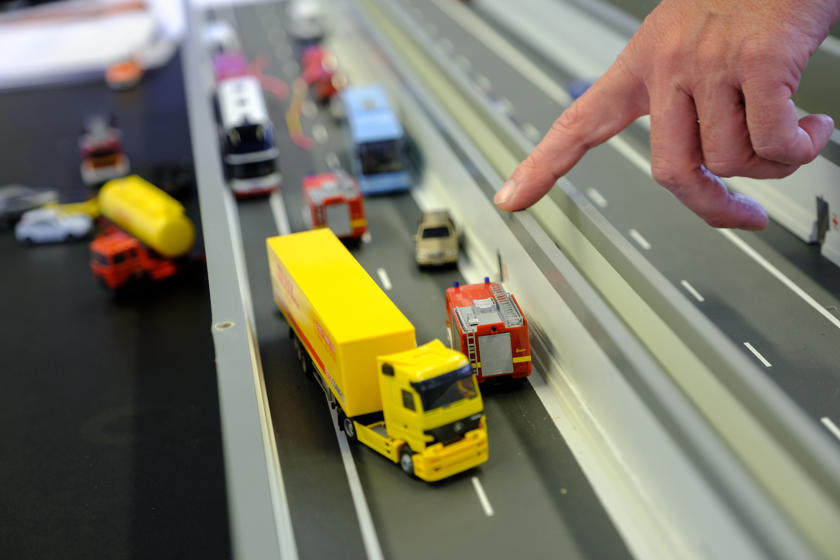

Safety in the tunnel
The safety of the tunnel’s users was integrated into the design from the outset. The Fehmarnbelt tunnel largely builds on the experiences from other large tunnels, particularly the Øresund tunnel between Denmark and Sweden. In contrast to the Øresund tunnel, however, the Fehmarnbelt tunnel has a full emergency lane in both directions.
Users can therefore be assured that the 18 km link will be a safe and secure facility for both drivers and train passengers. Road and rail traffic are separated into two separate tunnel tubes, one for each direction of travel. Moreover, the design will ensure against derailment.

Designed to prevent accidents, minimise the consequences and make self-rescue easy.
The Fehmarnbelt tunnel will be just as safe to use as equivalent routes on land. It includes an emergency lane and emergency exits along the entire length.
It has been designed to withstand a fire at a temperature of at least 1350 degrees Celsius for three hours.
The tunnel is monitored round-the-clock both from the tunnel’s own local control centre, LCC, on the Danish side of the Fehmarnbelt and from the rail traffic control centre in Copenhagen, TCC.
Fresh air in the tunnel
The traffic flow through the tunnel will ensure natural ventilation. The movement of vehicles through the tunnel will generate a piston effect, which constantly draws fresh air into the tunnel in the direction of travel.
Natural ventilation can be supplemented by mechanical ventilation from large fans in the roof.
However, the ventilation system will only be activated in special situations, e.g. if traffic is flowing abnormally slowly or comes to a standstill because of an accident.

The tunnel will be monitored round-the-clock
Road traffic in the tunnel is controlled from the tunnel’s control centre, which will be staffed round-the-clock. Monitoring ensures that abnormal incidents in the tunnel are quickly detected and attended to. Road traffic can also be controlled by remotely controlled dynamic road signs and barriers, e.g. to warn drivers of abnormal traffic conditions or to prevent congestion in the tunnel.
In the event of congestion or other incidents, users of the road tunnel will be informed via a special 'interrupt-current-radio broadcast' function, as is known from traffic announcements on the radio.

Self-rescue in the rail tunnel
In the event of a fire in a train in the tunnel, passengers will be asked to get themselves to safety in the train carriages unaffected by the fire. The train will continue directly to the so-called fire abatement site, which is located just outside the tunnel in open countryside.
Should a fire occur in a train which cannot be extinguished by the fire-fighting equipment available on the train, and the train is unable to leave the tunnel, it will be necessary to evacuate the train.
The emergency exits from the inner rail tunnel tube provide direct access to the safe area in the emergency lane in the inner road tunnel tube. From the safe area in the road tunnel tube, everyone can be safely evacuated out of the tunnel either by bus or on foot.
If an incident occurs in the outer railway tube, passengers will cross into the inner railway tube. At the emergency exits, there are stairs and walkways between the rails so that passengers can cross the track unimpeded into the safe area in the road tunnel.
